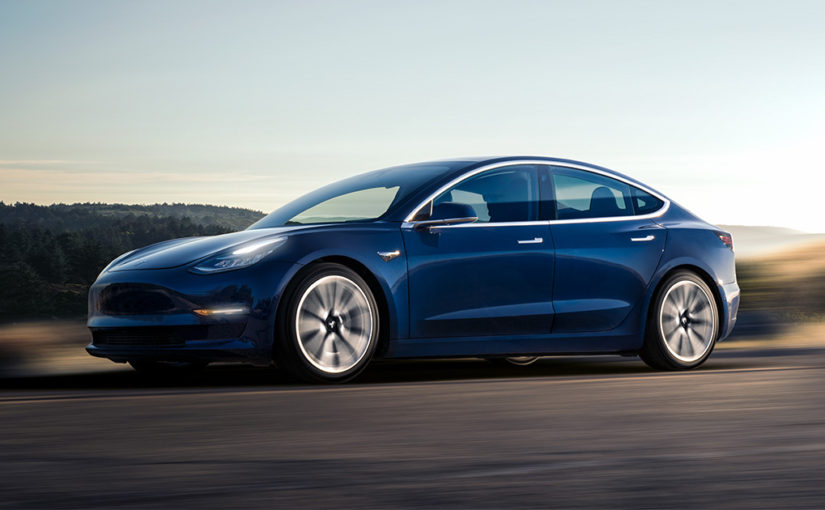
Tesla finding manufacturing tough as it struggles with too many orders
The new Model 3 saloon car from Tesla is way too popular for its own good and the company is struggling to cope with the number of orders it’s being asked to deliver.
Despite the “bottlenecks” in manufacturing, the electric carmaker says it is on course to sell 100,000 vehicles this year for the first time in its 14-year history.
And if things go to CEO Elon Musk’s forecasts, Tesla will be manufacturing 500,000 vehicles a year by the end of next year, according to Business Insider.
Such booming sales have catapulted the relative newcomer to the automotive sector to fourth in the world rankings, at least by revenue.
While it may have started out selling very high-end electric supercars, in recent years it has started designing and producing more conventional-looking saloon cars for the mass market.
However, being relatively new to manufacturing, the company is finding it difficult to make its robots work fast enough.
The company released a video (below) showing its robots working on the assembly line, but they will need to work faster if they are to deliver the 500,000 units the boss is hoping for.
The production system is said to be entirely new and different to other automakers, and, crucially, it was designed with a production rate of 100,000 vehicles a year.
But the unexpected high volume of orders has pit the company in an awkward position, although the general good will buyers have towards Tesla may provide the company with the time and space it needs to deliver.
In the meantime, the company has been reporting its progress so far.
In the third quarter of this year, Tesla says it delivered 26,150 vehicles, of which 14,065 were Model S, 11,865 were Model X, and 220 were Model 3.
This was the company’s “all-time best quarter” for Model S and X deliveries, representing a 4.5 per cent increase over Q3 2016, its previous best quarter, and a 17.7 per cent increase over Q2 2017.
The company had previously indicated that second half Model S and X deliveries would likely exceed first half deliveries of 47,077, but Tesla now expects to exceed that by several thousand vehicles.
In total, Tesla expects to deliver about 100,000 Model S and X vehicles in 2017, which would be a 31 per cent increase over 2016.
In addition to Q3 deliveries, about 4,820 Model S and X vehicles were in transit to customers at the end of the quarter. These will be counted as deliveries in Q4 2017.
Q3 production totaled 25,336 vehicles, with 260 of them being Model 3.
Model 3 production was less than anticipated due to “production bottlenecks”, says Tesla.
“Although the vast majority of manufacturing subsystems at both our California car plant and our Nevada Gigafactory are able to operate at high rate, a handful have taken longer to activate than expected,” says Tesla in a statement.
However, the company emphasizes that there are “no fundamental issues with the Model 3 production or supply chain”.
Tesla says it understands what needs to be fixed and is confident of addressing the manufacturing bottleneck issues in the near-term.
The company says the delivery count it published should be viewed as “slightly conservative”, as it only count a car as delivered if it is transferred to the customer and all paperwork is correct.
Final numbers could vary by up to 0.5 per cent.
Tesla adds that its vehicle deliveries represent only one measure of the company’s financial performance and should not be relied on as an indicator of quarterly financial results, which depend on a variety of factors, including the cost of sales, foreign exchange movements and mix of directly leased vehicles.


